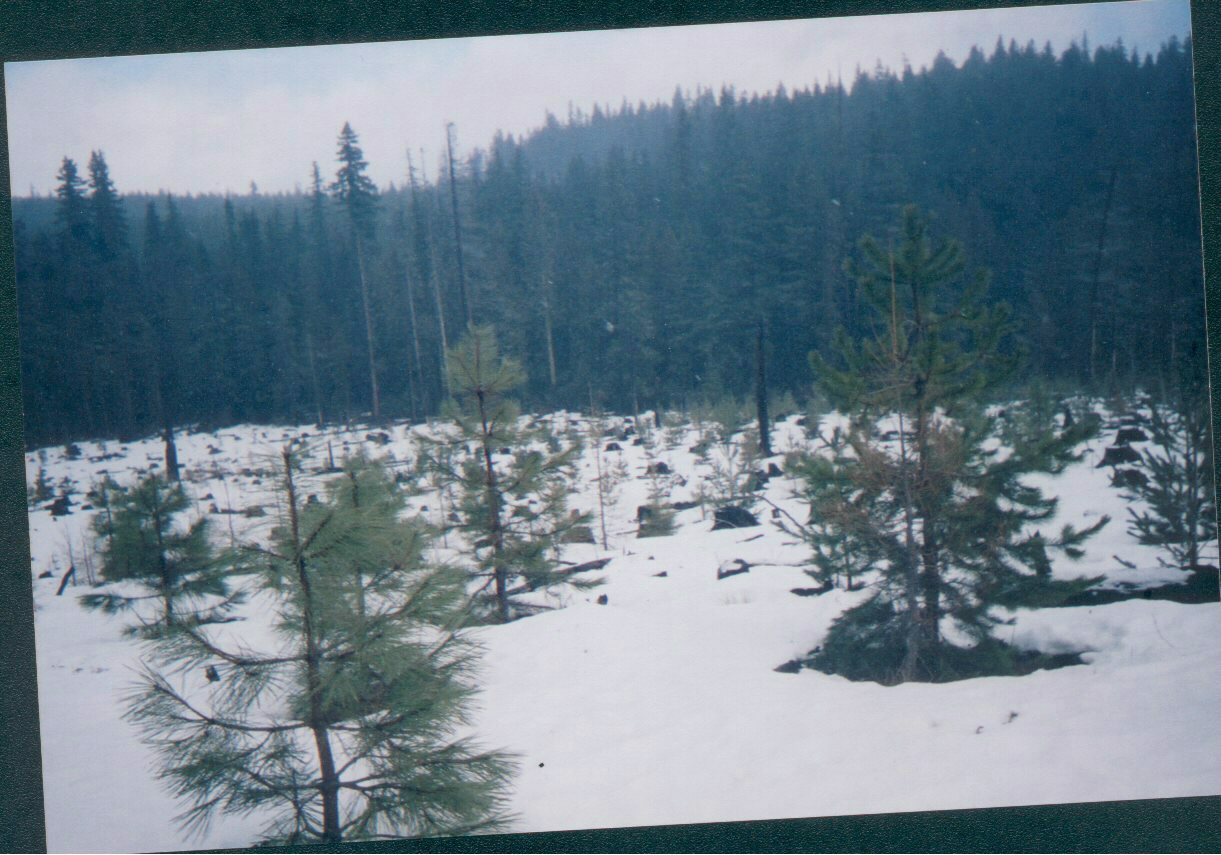Bear Knoll Timber Sale

Bark has successfully negotiated this sale so that all old growth units and all native stands were removed from this proposal. Bark was also able to visit the area with the Hood River Ranger District and protect pockets of valuable habitat within the units. There was also a road closure placed along road 2640230 which ORVs had been using to enter a Late Successional Reserve.
Barks Concerns
The EA states there are between 400 and 600 trees per acres and that their action will reduce these numbers to 220 to 293 trees per acre. The trees are supposedly in 70-95 years os age range yet on recent trips we are finding many trees that far exceed this designation. Also, many of the units along Frog Creek are on slopes 10 to 35.
Resources for Comment-Writing
Habitats & Species
S&M Species: Columbia Duskysnailbridgeoporus nobillisimus
T&E Species: Northern Spotted OwlLycopodium annotinum (fern)Lycopodum selago (fern) Interior Redband Trout
Other Species: lynxWolverineColumbia OregoniumRedband Trout
Additional Species Info: Two 100 acre stands of old-growth located in the area are associated with spotted owl pairs. Many of these units contain Nesting, Roosting and Foraging, and dispersal habitat that would be degraded. This plan also calls for the removal of all optimal cover for deer and elk
Roads
Open road density is now 3.22 miles per square mile. The standard for Mt. Hood should not exceed 2.5 miles per square mile. Bear Knoll is in a Tier 2 Watershed, which means this watershed should be managed to ensure a high quality of water with an emphasis on road removal. Yet their decision is to gate 4.85 miles of road during the summer and allow snowmobiles winter access. For the road mileage to be reduced these roads should be obliterated not recieve ineffective gates seasonally. Furthermore, we are conserved about the proposed temporary ‘ roads as all evidence indicates that there is nothing temporary about temporary roads. The net effect will be the same as if the open road density was increased.’
Reconstruction Miles: 3.6
Associated Files